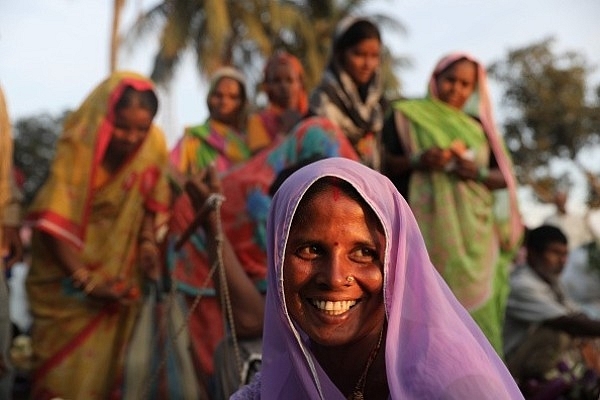Politics
How Pradhan Mantri Awas Yojana Is Changing The Rural Landscape
- The PMAY-G offers the best hope for transforming the rural landscape and in ensuring enhanced living standards for a majority of our population.

The PMAY-G offers the best hope for transforming the rural landscape. (Paula Bronstein/The Verbatim Agency/GettyImages)
Under Pradhan Mantri Awas Yojana (PMAY), low-cost affordable housing is set to change the urban landscape, aiding the settlement of migrants from villages in the cities. In addition, the potential for the transformation of housing in rural India is being explored under the PMAY-Gramin (PMAY-G). Replacing the Indira Awaas Yojana (IAY) that promised a pucca house to households below the poverty line in rural areas, the PMAY-G, under the Ministry of Rural Development, intends to achieve the mission of ‘housing for all’.
Rural housing has often been ignored in India, for it has been conveniently assumed that only urban areas require focus when it comes to the construction of pucca houses and dwellings. However, the factor of human growth in rural India directly depends on the quality of the houses. Proper sanitation, clean houses, and other basic amenities ensure a decent living standard for over three-fifths of our rural population.
As per the Working Group on Rural Housing for the twelfth five-year plan (2012-17), the requirement of rural houses stands at 4.39 crore. Census 2011, however, put the number at 3.47 crore. The Socio Economic Caste Census (SECC) of 2011 projected rural housing shortage at around 4.1 crore. Keeping the factors in consideration, the IAY was revamped as the PMAY-G, starting 1 April 2016, with an objective to construct three crore houses by 2022, thus ensuring healthy living standards for people in the rural areas.
What distinguishes PMAY-G from IAY is the operational intricacies and how the government intends to ensure transparency in the programme. As stated by the Comptroller and Auditor General in 2014 in its report on IAY, the programme failed to ensure transparency when it came to the selection of beneficiaries. Additionally, the programme was unable to prevent the monetary leaks that occurred, leading to poor quality of construction, lack of essential monitoring, and eventual breakdown of the entire system.
Under PMAY-G, the government’s primary focus has been convergence. Integrating Aadhaar for the transfer of assistance to the beneficiaries in order to curb the monetary leaks that otherwise occur, Ujjwala Gas Yojana to ensure clean energy for cooking in rural households, and the Swachh Bharat Abhiyaan, the convergence of various schemes with the PMAY-G ensures that the rural population is helped with a sustainable space to live in. Real-time monitoring of construction ensures convergence and quality of construction.
In addition, the Ministry of Rural Development has enabled an online platform, ‘awaassoft.nic.in’. Available for mobile operating systems too, the platform helps stakeholders and beneficiaries attain real-time progress reports, checks for account verification, assistance transfer, state-wise reports, and mapping of villages and rural areas under the SECC, and offers a comprehensive understanding of the work being done under the PMAY-G. The convergence of PMAY-G with other programmes can also be checked through the portal.
Under PMAY-G, a comprehensive review structure has also been conceptualised to ensure the quality of construction. The gram panchayat has been given the responsibility to identify the beneficiaries using data from the SECC of 2011. Addressing grievances pertaining to the identification of beneficiaries, disclosure of relevant lists in the gram panchayat, awareness campaigns, and the review of construction quality has also been left to the gram panchayat.
Even though the PMAY-G is ambitious in its pursuit, its success has been hindered by bureaucratic hurdles, lack of cooperation from the states for data synchronisation with the Centre, slow progress in upscaling the skills of masons, and hence, the low number of completed units should not be seen in the context of a failure. With a high degree of convergence with other programmes and transparency in allocations, the PMAY-G offers the best hope for transforming the rural landscape and in ensuring enhanced living standards for a majority of our population.
Introducing ElectionsHQ + 50 Ground Reports Project
The 2024 elections might seem easy to guess, but there are some important questions that shouldn't be missed.
Do freebies still sway voters? Do people prioritise infrastructure when voting? How will Punjab vote?
The answers to these questions provide great insights into where we, as a country, are headed in the years to come.
Swarajya is starting a project with an aim to do 50 solid ground stories and a smart commentary service on WhatsApp, a one-of-a-kind. We'd love your support during this election season.
Click below to contribute.
Latest